Docosahexaenoic acid and eicosapentaenoic acid strongly inhibit prostanoid TP receptor-dependent contractions of guinea pig gastric fundus smooth muscle
- PMID: 35466586
- PMCID: PMC9035583
- DOI: 10.1002/prp2.952
Docosahexaenoic acid and eicosapentaenoic acid strongly inhibit prostanoid TP receptor-dependent contractions of guinea pig gastric fundus smooth muscle
Abstract
The inhibitory effects of docosahexaenoic acid (DHA), eicosapentaenoic acid (EPA), and linoleic acid (LA) on the contractions induced by five prostanoids and U46619 (a TP receptor agonist) were examined in guinea pig gastric fundus smooth muscle (GFSM). Tension changes were isometrically measured, and the mRNA expression of prostanoid receptors was measured by RT-qPCR. DHA and EPA significantly inhibited contractions induced by the prostanoids and U46619, whereas LA inhibited those induced by prostaglandin D2 and U46619. The mRNA expression levels of the prostanoid receptors were TP ≈ EP3 >> FP > EP1 . The inhibition by DHA, EPA, and LA was positively correlated with that by SQ 29,548 (a TP receptor antagonist) but not with that by L-798,106 (an EP3 receptor antagonist). DHA and EPA suppressed high KCl-induced contractions by 35% and 25%, respectively, and the contractions induced by the prostanoids and U46619 were suppressed by verapamil, a voltage-dependent Ca2+ channel (VDCC) inhibitor, by 40%-85%. Although LA did not suppress high KCl-induced contractions, it suppressed U46619-induced contractions in the presence of verapamil. However, LA did not show significant inhibitory effects on U46619-induced Ca2+ increases in TP receptor-expressing cells. In contrast, LA inhibited U46619-induced contractions in the presence of verapamil, which was also suppressed by SKF-96365 (a store-operated Ca2+ channel [SOCC] inhibitor). These findings suggest that the TP receptor and VDCC are targets of DHA and EPA to inhibit prostanoid-induced contractions of guinea pig GFSM, and SOCCs play a significant role in LA-induced inhibition of U46619-induced contractions.
Keywords: docosahexaenoic acid; eicosapentaenoic acid; gastric fundus smooth muscle; n−3 polyunsaturated fatty acids; prostanoid TP receptor; prostanoids.
© 2022 The Authors. Pharmacology Research & Perspectives published by John Wiley & Sons Ltd, British Pharmacological Society and American Society for Pharmacology and Experimental Therapeutics.
Figures
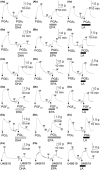
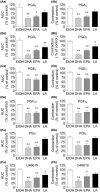

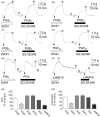
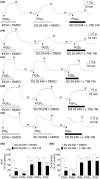
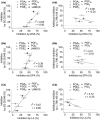

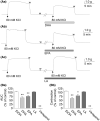
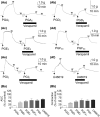
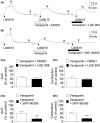
References
-
- Bang HO, Dyerberg J, Hjøorne N. The composition of food consumed by Greenland Eskimos. Acta Med Scand. 1976;200(1‐2):69‐73. - PubMed
Publication types
MeSH terms
Substances
LinkOut - more resources
Full Text Sources
Research Materials
Miscellaneous

